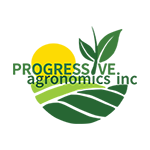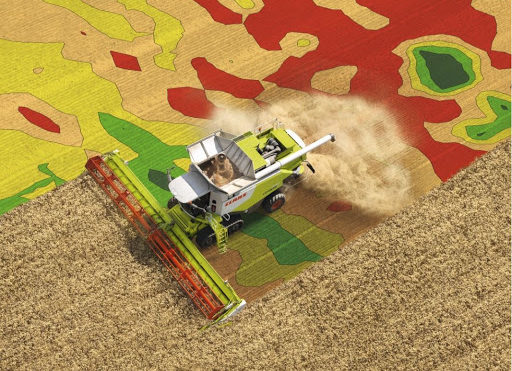While we all know about our yield monitor’s ability to generate yield maps, yield monitors and other precision ag tools can offer other benefits as well. And while yield maps are certainly powerful pieces of information, just as important is the information that helps understand why a field or area of a field performed the way that it did. Beck’s offers a precision ag tool called FARMserver® that can not only process your yield maps, but also help to answer the “why” question. Here are three steps you can take now to help make the most of what your yield monitor and FARMserver have to offer during fall harvest.
1. Gather your data from the spring and summer.
If you haven’t done so already, gather the data that you collected during planting, spraying, and fertilizer applications this year and store it someplace that is easily accessible so it can be utilized during harvest. There may be a time that you are in the combine and notice a problem area or a pattern of some type in the field. You may be trying to remember what fertilizer rate was used, whether nitrogen was applied pre-plant or at sidedress, or what chemicals that field was sprayed with and when. If you don’t have easy access to that data, you may just continue harvesting and forget to go back and find the information, and therefore miss out on a potential learning opportunity.
FARMserver offers farmers easy access to access any of your data layers (like planting, spraying, and fertilizer applications) from a smartphone or tablet using either the app for Apple devices, or by accessing FARMserver.com on other devices. If you have your phone with you in the combine, you can quickly look up any map for the field you are in, and FARMserver will show you your location on that as-applied map. You can then make a scouting note of your location in the field right from the seat of the combine so that you remember the observation after harvest. Be sure that you have all of your planting and as-applied data uploaded to FARMserver prior to harvest so that you have all of it at your fingertips when you need it.
2. Create variety-locator maps.
Fall harvest is one of the most important times to evaluate the performance of the corn hybrids and soybean varieties that you chose to plant. Whether you are evaluating two products in a side-by-side comparison or just trying to make note of and understand how products performed in each field, the first step is to know what hybrid or variety you are harvesting as you are harvesting it. Knowing this not only gives insight into the yield performance, but can also help you to make note of factors like dry down, standability, disease tolerance, and more.
Many yield monitors offer the ability to import variety-locator files: maps that are generated from planting data that can be loaded into the yield monitor so that the yield monitor will display the variety you are harvesting as you move through the field. If you have your planting data stored in FARMserver, you can create variety locator files to use in an Ag Leader, Case, or John Deere yield monitor. Don’t have a yield monitor that offers this feature? In that case, you can use an iPhone or iPad with the FARMserver app to display your varieties on an as-planted map. You can even set the GPS setting in the app to “follow” so that as the combine moves through the field, a blue dot will move across the map showing which hybrid or variety you are harvesting.
3. Calibrate your yield monitor.
During harvest, most farmers don’t think twice about making sure that their combine settings are fine-tuned. For example, if the sieves aren’t set correctly, there will either be grain left in the field or discounts at the elevator for grain that’s not clean. In the same way, calibrating a yield monitor ensures that the data it collects is accurate. Good quality data allows you to make good quality decisions based on it. Even if you currently don’t have a way to directly use yield maps for variable-rate applications, you may have that ability in the future, and you’ll be glad that you took the time now to collect well calibrated yield data.
But the reality of harvest is that acres need to be covered, often in narrow windows of good weather, and calibration takes time and slows harvest. And as any farmer with a yield monitor knows, yield calibration is an inexact science. Since the monitor is simply estimating the weight of grain based on sensors and not actually weighing every kernel, it will never be perfect. To keep yield calibration practical, I’d recommend taking the time to do a good quality calibration on the first day harvesting each crop. Depending on your monitor, a good quality calibration often involves multiple loads at different speeds to simulate varying grain flows through the machine. The first day is almost never the most productive day of harvest anyway — combine settings need fine-tuned, minor maintenance issues or repairs may need addressed, grain hauling and storage logistics are still getting worked out, etc. While this strategy still won’t deliver perfect yield data in every field, a good quality calibration on the first day of harvest will often be close enough that you may not need to calibrate again for the rest of the season — saving time in the long run.
To help improve the quality of data even further and account for changing field conditions, you can post-calibrate your data after harvest. FARMserver offers a tool that allows you to enter exact bushels or weights from elevator tickets or grain cart scales for each field. Once you’ve done that, the maps and reports will accurately reflect the bushels that were actually harvested. The combination of a good calibration at the start of harvest, followed by a post-calibration at the end, is a practical way to get good quality data while minimizing the investment of time during harvest.
Following these steps can help you prepare for a successful harvest and make the most of your yield monitor and other precision ag tools, so that the end result is more than just a map — valuable learnings from this year and better decisions in future years.
Have questions about these or other FARMserver features? Would you like help getting started with FARMserver? Check out the information and videos online at FARMserver.com, call your Beck’s dealer or seed advisor, or contact FARMserver support at 317.385.4120 or [email protected].
~ Mike Hannewald, CCA – Field Agronomist/Precision Farm Field Advisor

